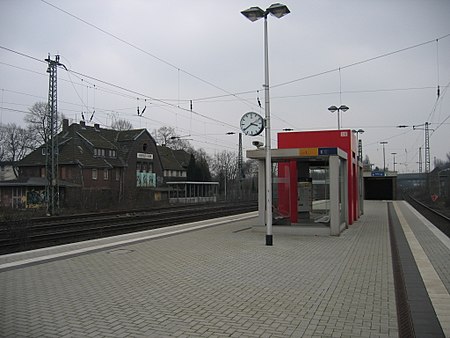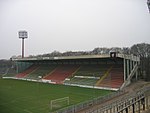Krefeld-Linn station

Krefeld-Linn station is a regional station in the district of Linn in the city of Krefeld in the German state of North Rhine-Westphalia. It lies on the Osterath–Essen railway; the Rhenish Railway Company (Rheinische Eisenbahn-Gesellschaft) gained a concession to build the line on 16 July 1863. The line was opened on 1 September 1866, with the stations not yet finished. Linn station was opened on 15 October 1874 and the first entrance building was also put into operation at this time. The station name was changed to Crefeld-Linn in 1905 and Krefeld-Linn in 1925. This name still applies today. A new entrance building opened in Linn in 1907, which is still preserved (the old one was demolished in 1912). It has not been used for more than 20 years and is in a stage of advanced decay.
Excerpt from the Wikipedia article Krefeld-Linn station (License: CC BY-SA 3.0, Authors, Images).Krefeld-Linn station
Idastraße, Krefeld Linn
Geographical coordinates (GPS) Address External links Nearby Places Show on map
Geographical coordinates (GPS)
| Latitude | Longitude |
|---|---|
| N 51.33765 ° | E 6.63002 ° |
Address
Krefeld-Linn
Idastraße
47809 Krefeld, Linn
North Rhine-Westphalia, Germany
Open on Google Maps








